Eighteen inches, give or take, counts for a lot at Bay Island Bonsai exhibits. Generally, trees between 8″ and 18″ tall are considered medium bonsai and are exhibited in “three-point displays” – displays with two trees and one accent plant.
Composing these displays requires care. If you haven’t set up a medium display before, imagine the following. First, find a show pot for your favorite chuhin (12″-18″) or kifu (8″-12″) sized bonsai. Then find a stand for the tree. Then try to locate a second tree that compliments the first. Conifers or evergreen broadleaf, for example, complement deciduous trees well. Try to ensure that the second tree is somewhat larger or smaller than the first – displaying two trees that are the same size can look funny. Next, find a show pot and stand for the second tree. Add one small accent plant with stand.
With the proper elements at hand, the trick becomes arranging them in an acceptable fashion. The trees should either point to each other, or both should point to the accent. One tree should be closer to the back of the table, the other toward the front.
It’s quite a puzzle, all told. When done well, the results are beautiful and balanced. Here are a few of the three-point displays shown at Bay Island Bonsai’s recent exhibit.
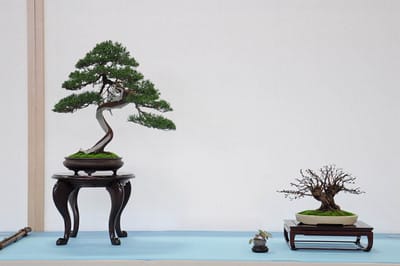
Shimpaku and potentilla
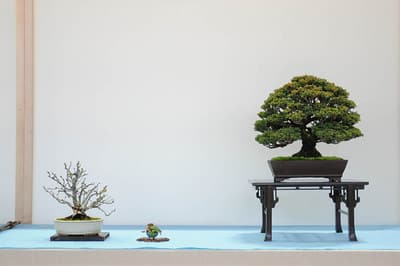
Japanese flowering quince ‘chojubai’ and sawara cypress
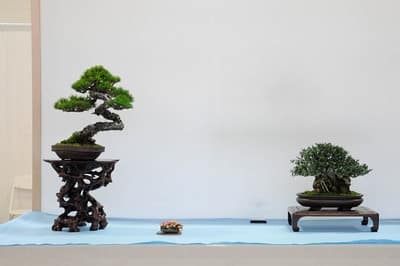
Japanese red pine and olive
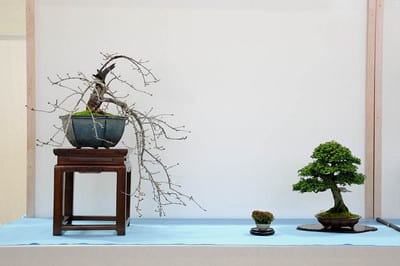
Weeping cherry and hinoki
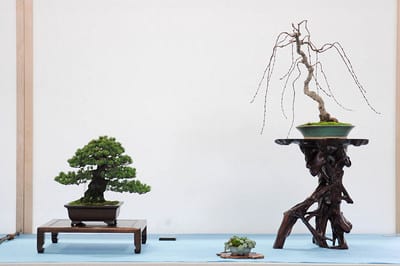
Japanese five-needle pine and weeping cherry
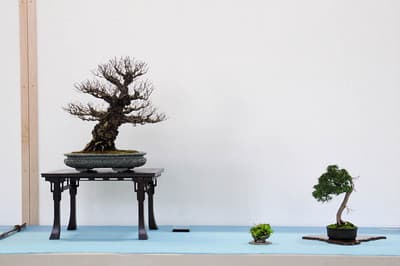
Corkbark elm and shimpaku
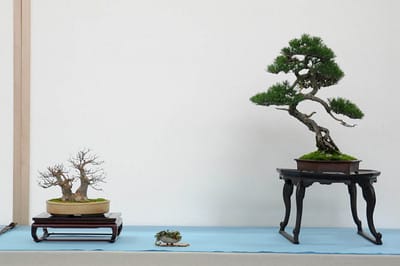
Trident maple and Japanese black pine
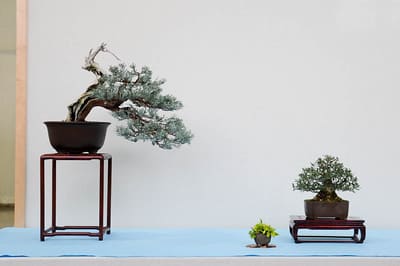
Sierra juniper and olive
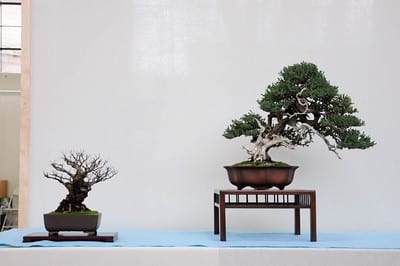
Corkbark elm and procumbens juniper
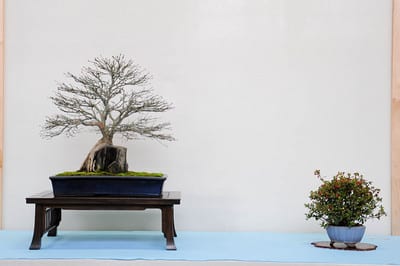
Root over rock Japanese maple and accent
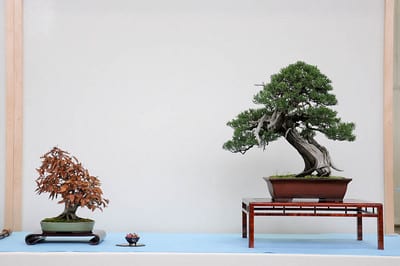
Japanese beech and California juniper
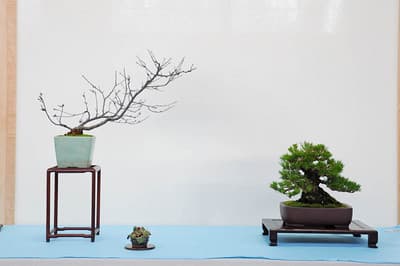
Flowering plum and Japanese black pine
Subscribe to Bonsai Tonight
New Posts Delivered Every Tuesday and Friday
Christian says
There has been some very enlightening discussion about some of these 3-point displays on the bonsainut forums!
Chris
Sam Edge says
Jonas can your provide your views about the red pine with the olive. The setup would indicate the tree movement is to the right. The left branch though gives a perspective on the movement towards the left.
I know how careful BIB places trees so your thoughts on this tree’s movement would be enlightening. Having seen the red pine at the show it is very well done with incredibly short needles quite balanced throughout the tree.
xwires says
Hi Sam – very good question. You’re right about the set-up – the tree is positioned in a way that indicates movement to the right. The lower part of the trunk points right, but the upper part of the trunk and the key branch point left. I think the tree could be successfully styled with a left or right direction. To emphasize one direction over the other, the apex could be refined to clearly point left or right. Getting the key branch and the apex to point strongly in the same direction will clarify the flow of the tree. My guess is that this will happen the next time the tree is styled.